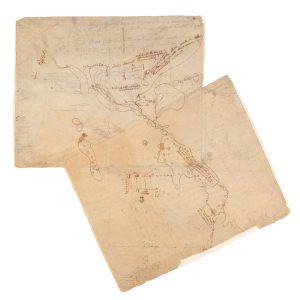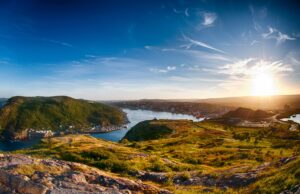
People & Culture
Kahkiihtwaam ee-pee-kiiweehtataahk: Bringing it back home again
The story of how a critically endangered Indigenous language can be saved
- 6310 words
- 26 minutes
This article is over 5 years old and may contain outdated information.
People & Culture

Photo: Toby Thorleifsson and John Huston endure winds of up to 20 knots. (Photo courtesy of New Land 2013)

The New Land 2013 expedition is following the route of Norwegian explorer Otto Sverdrup across Ellesmere Island, Nunavut. This blog was written by John Huston.
We’re about halfway through the expedition now, so it’s time for another installment of fun expedition stats and facts. But first a quick wrap-up of what has taken place over the last two days.

We’ve kind of been on the border of spring on this expedition, and it’s been very warm. Sometimes we’re skiing only in our long underwear tops and our pants fully unzipped. But yesterday afternoon we got hammered by a good storm; we haven’t had a big blow like that yet on the trip. Visibility dropped to basically zero; we had a lot of trouble seeing in front of us. Winds picked up to 15 to 20 knots from the northwest, so we called it a day right after the first march and took our time carefully putting up the tents and staking out the dogs, making sure nothing blew away. It was a loud night in the tent, because it was getting battered by winds, but it was safe. It gets your adrenaline up a little bit when you’re working in conditions like that.
Today we entered Nansen Sound for the first time. This huge body of water leads out to the Arctic Ocean and the northernmost point we’re heading towards called Land’s Lokk, which is also Otto Sverdrup’s furthest north point — it’s a special destination for us. Ski conditions were totally awesome, and we are out in the middle of the sound and looking at mountainous cliffs on two horizons to the northeast and to the south.

Okay, here come some expedition stats from the first half of the expedition:
This blog was originally published on forwardendeavors.com. Read more blog posts from New Land 2013 here.
Are you passionate about Canadian geography?
You can support Canadian Geographic in 3 ways:

People & Culture
The story of how a critically endangered Indigenous language can be saved

People & Culture
For generations, hunting, and the deep connection to the land it creates, has been a mainstay of Inuit culture. As the coastline changes rapidly—reshaping the marine landscape and jeopardizing the hunt—Inuit youth are charting ways to preserve the hunt, and their identity.

People & Culture
*It means “awake” in Beothuk, the language and people who once called present-day Newfoundland home for about 2,000 years. One young woman, believed to be the last living Beothuk, left a collection of maps and art that help us understand her people’s story.

Travel
Immerse yourself in Viking archaeology and Basque whaling history while taking in Newfoundland’s scenic coastline and incredible geology